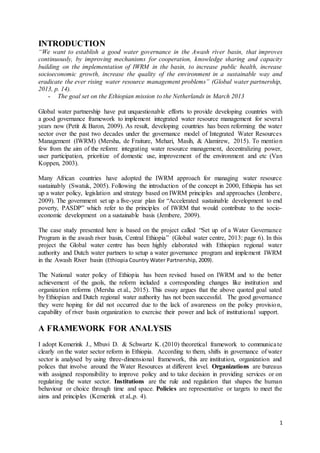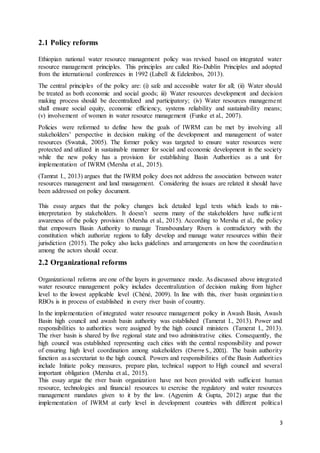This document discusses water sector reform and implementation of integrated water resource management (IWRM) in the Awash River Basin in Ethiopia. It outlines the goal of establishing good water governance through improving cooperation, knowledge sharing, and capacity building. It discusses how Ethiopia adopted IWRM principles in water policies and established organizations like river basin authorities. However, it argues the goal of good governance has not been achieved due to a lack of awareness of policies, the capabilities of river basin organizations, and insufficient institutional support.






